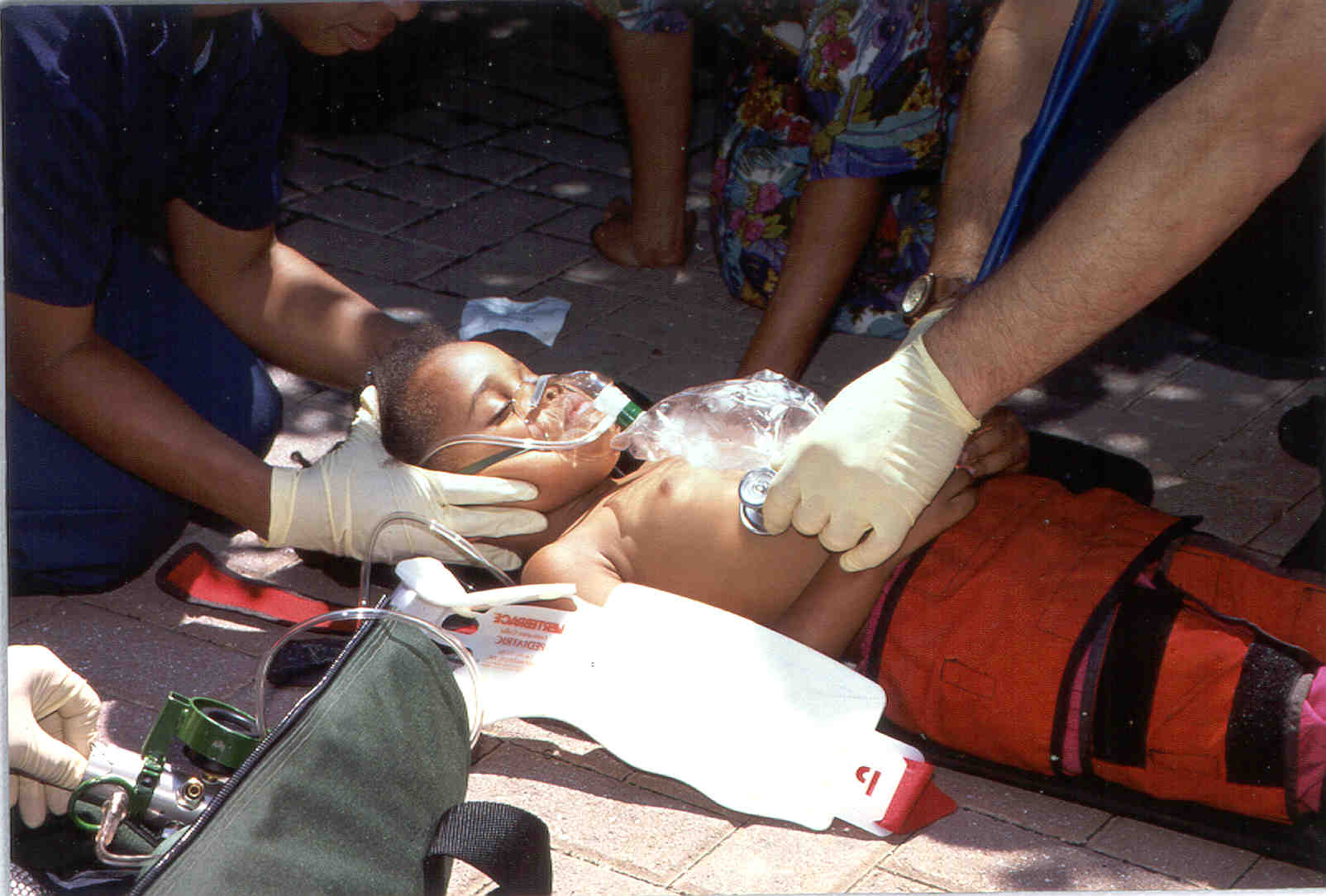Be vigilant and curious with atraumatic back pain.
In this podcast episode we chatted with, Dr. Bo Burns, from the University of Oklahoma, about spinal emergencies. Dr. Burns emphasized the importance of being vigilant and curious when it comes to evaluating patients with atraumatic back pain. It can be easy to dismiss or overlook these patients, but we need to replace judgment with curiosity in order to uncover the underlying cause of their pain. Which might be a true emergency.
Dr. Burns discusses how atraumatic back pain is a common reason for prehospital calls, and highlights the fact that there are various spinal emergencies that could be causing the pain. These emergencies include infection, fracture, herniation with compression, cancer with compression, and vascular emergencies of the spine. He also mentions several risk factors that should be considered, such as age over 55, cancer, trauma, coagulopathy, immunodeficiency, and recent spinal procedures or injections.
One specific atraumatic emergency that Dr. Burns focuses on is epidural abscess. He explains that these patients can be challenging to diagnose because their symptoms start off as nonspecific and become more specific over time. As the abscess grows within the epidural space, it puts pressure on the spinal cord, leading to more dramatic symptoms. Dr. Burns emphasizes the need for vigilance and diligence in evaluating patients with severe atraumatic back pain, as they require thorough evaluation and attention to catch this disease process.
The podcast also touches on history and physical exam tricks for these patients. Dr. Burns acknowledges that assessing strength can be difficult, especially in older patients with a higher BMI and reduced skeletal muscle mass. He advises prehospital providers, who are often the first point of contact for these patients, to gather as much information as possible, as it can be valuable in guiding further evaluation and treatment. Ask what if anything is different about their pain today. Have they been seen for this recently. Do they have any fevers. Any weakness. What are their risk factors, such as diabetes, immune deficiency, recent procedure.
Overall, the key takeaway from the podcast is the importance of being vigilant and curious when evaluating patients with atraumatic back pain. My favorite quote from the episode is- “replace judgment with curiosity”. Approach these cases with a thorough and open mindset. By doing so, we can ensure that patients receive the appropriate evaluation and treatment for their condition.
Importance of history and physical.
The podcast emphasizes the significance of history and physical examination in the evaluation of patients with atraumatic back pain. Dr. Burns emphasizes that pre-hospital providers have the ability to gather important information through these methods, without the need for imaging or diagnostic tools.
One important aspect highlighted in the podcast is the ability to assess mobility. Dr. Burns mentions the importance of documenting whether the patient requires assistance or is able to stand on their own. This information helps in risk stratification and provides valuable insights into the patient’s condition.
The podcast also discusses the importance of understanding what is new and what is chronic for the patient. Dr. Burns mentions that patients with back pain may already experience it as a part of their normal day. Therefore, it is crucial to determine what has changed and why they sought medical attention today. This can help in identifying any alarming symptoms or underlying conditions.
In addition to mobility and changes in symptoms, the podcast emphasizes the significance of other aspects of the physical examination. For example, the ability to extend the leg and engage the quadricep muscle, even without getting out of the chair, can provide valuable information about the patient’s condition. Asking about incontinence, weakness, or new radiation distribution can also help in assessing the severity and potential causes of the back pain.
The podcast also highlights specific risk factors to consider when evaluating patients with back pain. IV drug use is mentioned as a significant risk factor for epidural abscess. Other risk factors include recent fractures, recent bacteremia, recent antibiotic use, and certain medical conditions like diabetes. Realize that diabetes is actually the number one risk factor for this condition followed by IV drug use. Recognizing these risk factors can help in identifying potential sources of infection and ensuring appropriate management.
Overall, the podcast emphasizes the importance of being thorough and diligent when evaluating patients with atraumatic back pain. Healthcare providers are encouraged to gather as much information as possible through history and physical examination, as these methods can provide valuable insights into the patient’s condition. Gathering this information on scene or en route can help clue us in at the hospital and help the hospital make the appropriate diagnosis quicker.
Epidural abscess is a time-sensitive emergency.
One specific condition that healthcare providers should be aware of when evaluating patients with back pain is epidural abscess. The podcast highlights that epidural abscess is a time-sensitive emergency, meaning that early diagnosis and intervention are crucial in preventing severe complications and long-term disability such as permanent weakness or paralysis.
Epidural abscess is a condition characterized by the collection of pus in the epidural space, which is the area between the spinal cord and the boney spine. The podcast explains that while some cases of epidural abscess may be a result of recent spinal procedures or surgeries, the majority of cases are caused by hematogenous spread or the spread of bacteria through the bloodstream. Risk factors for epidural abscess include IV drug use, diabetes, immunocompromised states, and chronic kidney disease.
One interesting point made in the podcast is that the classic triad of symptoms associated with epidural abscess (fever, pain, and neurologic dysfunction) is actually present in only 10 to 13 percent of cases at the time of diagnosis. This highlights the importance of being diligent and considering the risk factors and presentation of the patient when evaluating back pain. The podcast emphasizes that healthcare providers should approach patients with atraumatic back pain with the same level of concern and attention as they would for a patient with chest pain.
The morbidity associated with epidural abscess is significant. As the disease progresses, more compression of the spinal cord occurs, leading to ischemia and potentially paralysis. The podcast notes that most patients with neurologic deficits do not recover them, underscoring the urgency of early diagnosis and intervention. The podcast also mentions other complications that can arise from epidural abscess, such as osteomyelitis of the spine, discitis, and fractures, which can result in permanent disability.
It is important to recognize the progression of the disease and the nonspecific nature of the initial symptoms. Patients with epidural abscess often seek help for the same back pain within a short period of time. This should increase the suspicion of healthcare providers and prompt them to consider the possibility of epidural abscess. Gathering information about previous visits and changes in symptoms can be valuable in identifying the progression of the disease.
In the pre-hospital setting, paramedics and EMTs are encouraged to gather information from the scene and from family members, as well as to ask the patient about previous visits and changes in symptoms. This information can be relayed to the emergency department, helping to increase suspicion and prompt further evaluation. By identifying patients who are at risk for epidural abscess, healthcare providers can ensure that these patients receive the appropriate evaluation and treatment in a timely manner with the goal of preventing or minimizing long term disability.
In conclusion, the podcast emphasizes that epidural abscess is a time-sensitive emergency. Early diagnosis and intervention are crucial in preventing severe complications and long-term disability. We need to be thorough and diligent when evaluating patients with atraumatic back pain, gathering as much information as possible through history and physical examination. By being vigilant and curious, healthcare providers can potentially prevent devastating outcomes associated with epidural abscess by diagnosing this and initiating appropriate treatment earlier in the disease course.
Epidural abscesses require urgent diagnosis and treatment.
The typical workup that occurs in the emergency department for patients with atraumatic back pain will depend on the severity of their symptoms and the risk factors we already discussed. A broad range of tests and evaluations may be conducted. For example, in the case of a diabetic patient with heart disease and a recent toe amputation who presents complaining of acute back pain, the healthcare provider would be concerned about an epidural abscesses. They would perform blood cultures, sepsis evaluations, and assess fluid administration. Inflammatory markers such as ESR and CRP are also examined, with a CRP level over 30 indicating a potential issue.
The podcast emphasizes the importance of context when interpreting these results. If the patient’s CRP is solely related to the foot amputation, without concern for new or worrisome back pain, it may not be indicative of an epidural abscess. However, if the patient presents with new onset weakness and severe back pain, the healthcare provider becomes more concerned about the possibility of an epidural abscess. In such cases, an MRI is typically performed to confirm the diagnosis.
Once an epidural abscess is diagnosed, treatment falls within the realm of spine surgery and neurosurgery. Most cases are managed operatively through aspiration, although there are some instances where non-operative management may be attempted with just antibiotics. The decision to pursue surgery or non-operative management may vary depending on the location and healthcare system.
To aid in the decision-making process, the podcast highlights a clinical decision tool called the S-I-R-C-H tool. This tool, published in the Western Journal of Emergency Medicine, helps healthcare providers assess the risk of spine infection and determine the need for an MRI. A SIRCH score greater than three is found to be 96% positive for finding an epidural abscess on MRI, providing valuable guidance for clinicians in making treatment decisions.
The podcast also highlights the importance of maintaining a high index of suspicion for epidural abscesses, especially for pre-hospital providers and agencies that respond to lift assists. Atraumatic back pain may not initially appear as a serious emergency, but it can be a presenting symptom for patients with epidural abscesses. Therefore, healthcare providers should remain vigilant and consider the possibility of epidural abscesses in such cases.
In conclusion, the podcast emphasizes that epidural abscesses require urgent treatment. Early diagnosis and intervention are crucial in preventing severe complications and long-term disability.
Cauda Equina
The podcast also discusses the topic of cauda equina syndrome. Cauda equina means horses tail. And that is the appearance the spinal cord has when it terminates around L1-L2 vertebrae and the nerve roots fan out like a horses tail. Cauda equina syndrome refers to the compression of these nerve roots, specifically the L2 to L5 and S1 to S5 nerve roots. This compression can lead to a range of symptoms, including lower extremity weakness and anesthesia, as well as bladder and bowel dysfunction.
There is a lack of specific diagnostic criteria for cauda equina syndrome, with over 14 different definitions in the literature. However, one common feature among these definitions is the presence of bladder dysfunction. This can manifest as incontinence of urine, which is a cause for concern. The podcast distinguishes between different types of incontinence, such as overflow incontinence, stress incontinence, overactive bladder, and temporary incontinence from a urinary tract infection. It emphasizes the importance of teasing out these different causes to determine the underlying issue. Patients who have overflow incontinence, in other words their bladder fills until it can’t anymore and they pee on themselves, often do not have the sensation that they need to urinate. They just suddenly urinate on themselves unexpectedly and do not know why. This is concerning for cauda equina syndrome. This is because the bladder receives nerve innervation from the S2-S4 nerve roots. So if these are compressed the bladder will not be able to function correctly. As the compression progresses, the bladder can fill without the patient’s knowledge, leading to overflow incontinence. This is particularly worrisome as it indicates an advancing compression of the nerve roots.
To better evaluate bladder dysfunction, in the hospital, we might preform a post void residual evaluation. In other words, we have the patient urinate and then we measure the remaining urine in the bladder by either conducting a bladder scan or obtaining a catheterized specimen to measure the post-void residual volume. If the post-void residual is greater than 100 mLs, it indicates incomplete emptying of the bladder, which may be caused by compression of the nerve roots.
The most common cause of compression in cauda equina syndrome is central disc herniation, which can present with new onset pain down both legs. While disc herniations most commonly occur on the posterior lateral side causing pain down on leg or the other, central disc herniation will press on nerve roots going to both legs. Central disc herniation can account for about 40% of cauda equina cases. These patients often present acutely, experiencing severe pain down both legs and bladder dysfunction. Other less common causes include fracture with retropulsion of boney fragments, epidural abscess, spinal epidural hematoma.
In terms of physical examination, performing a sensory exam of the perianal and perineal area is important, as these are the regions innervated by the sacral roots. Preforming a perineal or rectal exam may not always be feasible on the ambulance where privacy is more difficult to maintain. So ask the patient about the ability to feel the areas of the bottom when sitting down. It’s also important to ask about any sexual dysfunction as this is another possible sign of cauda equina syndrome.
In conclusion, cauda equina syndrome is caused by nerve root compression of the spine in the L2-L5 and S1-S5 region. Cauda equina is a time sensitive emergency to prevent permanent disability. Cauda equina can cause bladder or bowel disfunction dysfunction, which can manifest as incontinence. Important physical exam findings to note are any loss of sensation (specifically in the perineal or perianal are), weakness, or pain radiating down bilateral legs. Cauda equina is most commonly caused by an acute central disc herniation and can present with acute severe pain radiating down bilateral legs, loss of perineal sensation, and urinary retention with overflow incontinence.
What you do matters
Atraumatic low back pain may not seem like an emergency but it can be. Although these patients don’t require lights and sirens, they do still require our thorough evaluation. By being vigilant and preforming a good history and physical exam, you can identify concerning findings that can help expedite diagnosis in a timely fashion. Remember, replace judgement with curiosity so you don’t miss the emergency lurking beneath.





